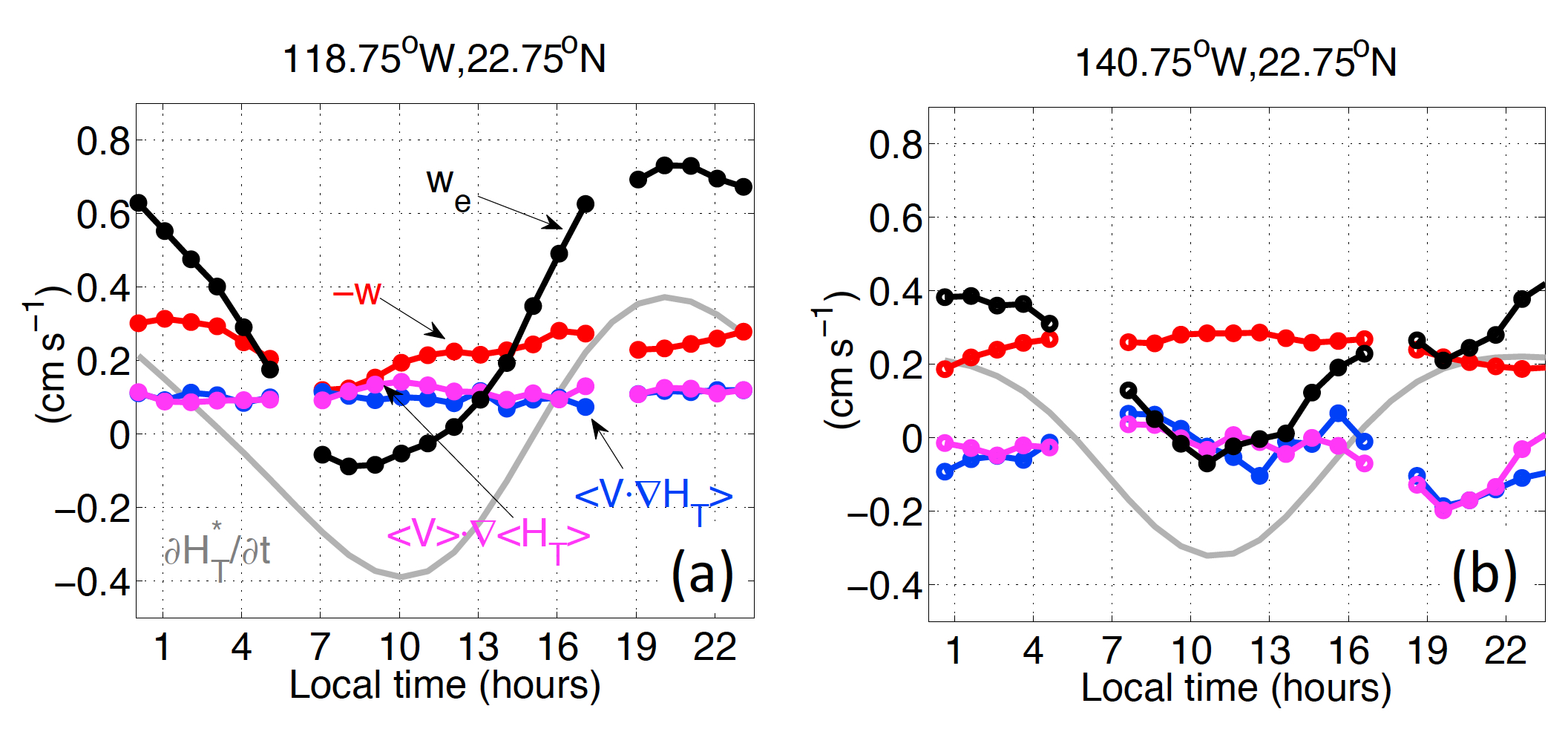Entrainment rate diurnal cycle in marine stratiform clouds
Submitter:
Painemal, David — NASA LaRC /AMA
Area of research:
Cloud Processes
Journal Reference:
Science
Cloud entrainment, the mixing of non-turbulent cloud-free air at the edges of the cloud layer, is a central mechanism governing cloud lifecycles within the cloud-topped marine boundary layer. Cloud-top entrainment across the inversion base regulates the boundary-layer turbulence and growth, as well as the cloud cover and microphysical evolution in climatically important marine boundary-layer regimes. Although entrainment-rate measurements would be helpful for testing different entrainment closures in models, such estimates are scarce and limited to a few observational studies.
Impact
In this study, we describe a new approach to estimating entrainment rate in marine low clouds, using five months of hourly satellite data and meteorological outputs from a forecast model. More specifically, the boundary-layer mass budget equation is used to estimate the diurnal cycle in entrainment rate in the subsidence region of the northeast Pacific domain during May to September of 2013, by combining cloud-top height retrievals from the Fifteenth Geostationary Operational Environmental Satellite (GOES-15) and meteorological fields simulated by the European Centre for Medium-Range Weather Forecasts (ECMWF) forecast model. Although the data set enables the computation of instantaneous We, here we emphasize its diurnal cycle and regional pattern, with the goal of improving understanding of the large-scale processes that govern the variability in marine stratocumulus clouds. The satellite-based We introduced in this work can be used together with other aircraft- and ground-based observations to understand the limitations of different methods of entrainment-rate estimation.
Summary
The mean diurnal cycle of cloud entrainment rate (We) over the northeast Pacific region is for the first time computed by combining, in a mixed-layer model framework, the hourly-composited GOES-15 satellite-based cloud-top height (HT) tendency, advection, and large-scale vertical velocity (W) during May to September 2013, with horizontal winds and w taken from the ECMWF forecast model. The tendency term dominates the magnitude and phase of the We diurnal cycle, with a secondary role of w, and a modest advective contribution. The peak and minimum in We occur between 20:00-22:00 LT and 9:00-11:00 LT, respectively, in close agreement with the diurnal cycle of turbulence driven by cloud-top longwave cooling. Uncertainties in HT and ECMWF fields are assessed with in situ observations and three meteorological reanalysis data sets. This study provides the basis for constructing nearly global climatologies of We by combining a suite of well-calibrated geostationary satellites.


